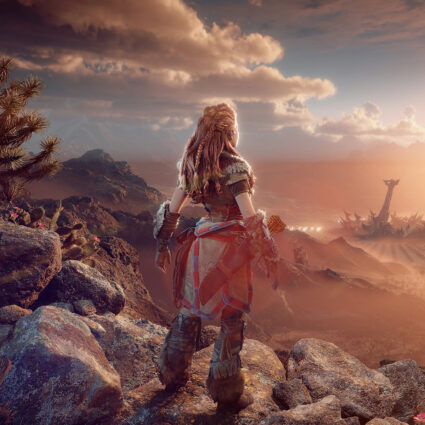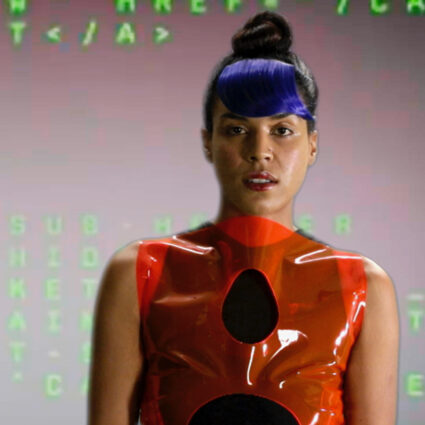A new book from Hatje Cantz, The Snake and the Lightning: Aby Warburg’s American Journey, enlivens the German art historian’s trek to the Southwest in 1895-96.

On April 21, 1923, the German art historian Aby Warburg stood before an assembly in the dining hall of a mental institution in Kreuzlingen, Switzerland, where he was a patient. His audience consisted of fellow troubled minds and the doctors tasked with repairing them, along with a number of invited guests.
As Warburg (1866-1929) began to speak and to exhibit slide images, he traveled back some twenty-eight years and thousands of miles to the American Southwest, where, in 1895-96, he had stood on the plazas of Oraibi, Acoma, Zuni, Laguna, and other ancient communities. His visits to Pueblo peoples, one art historian surmised, represented a “journey to the origin of images.”
Entitled “Images from the Region of the Pueblo Indians of North America,” the lecture convinced Warburg’s doctors that he had recovered sufficiently to allow for his release. A new book on his trek, The Snake and the Lightning: Aby Warburg’s American Journey by Uwe Fleckner, from the German art publisher Hatje Cantz, adds to an extensive body of literature about Warburg’s New World travels that includes the 2021 Dia Art Foundation publication of the illustrated script for Joan Jonas’s 21st-century performance based on Warburg’s lecture, The Shape, the Scent, the Feel of Things.
Fleckner’s new volume manages to serve as both a clear, concise introduction to a complicated subject and—I’d wager—as a source of new information for even the most senior Warburg researcher. It clips along in thirty-eight short chapters that track Warburg’s travels through America from September 1895 to May 1896. We learn about everything, from the ship he voyaged on and the camera (a Kodak Buckeye) with which he documented Pueblo life, to the artifacts he collected from trading posts and Native Americans. Chapters entitled “The Forger,” “The Dancer,” “The Sorcerer,” “The Missionary,” etc., draw somewhat detailed mini-portraits of individuals encountered on his travels.
Photographs taken by and gathered by Warburg illustrate the text, along with drawings, artifacts, and other visual documentation. Some of the images have been previously published in larger formats that allow for closer reading, but the small, snapshots-in-an-album feel of the images underscore Fleckner’s description of the book as a photo album. The author also, however, does not shy away from commentary on the problematic aspects of Warburg’s interaction with Pueblo cultures. The image, seen here, of Warburg grasping the arm of a Hopi Hemiskatsina dancer, during a break in a ceremonial dance, is one of several instances Fleckner describes in his book in which the German art historian violated Pueblo communities’ protocols.

Much of Warburg’s 1923 lecture focused on the Hopi’s enacted prayer for rain generally known as the Snake Dance. Amongst all Pueblo ceremonies, it was the most sensationalized from a non-Native perspective in the 19th and early 20th centuries. The vision of Hopi dancers with rattlesnakes dangling from their mouths conveyed an exotic, ethnological glamour that inflamed public imagination.
Alas, it remained a component of Hopi culture that Warburg did not actually see firsthand. Victorian sensibilities caused the art historian and his guide to the Hopi communities, Mennonite missionary and artifact dealer Henry Voth, to leave Oraibi early after witnessing the Hemiskatsina ritual with its scantily dressed sacred clowns, whom the two found “highly obscene.” Thus, he was left to rely on imagery such as George Wharton James’s dramatic photographs of the dance in the 1890s (Fleckner found one of James’s images so compelling that he reproduced it twice in the new volume) and on 19th-century reports on the Snake Dance by such figures as soldier-scholar John G. Bourke and anthropologist-archeologist Jesse Walter Fewkes.
Noting Warburg’s primary research area, the connection of so-called “primitive cultures’” symbols, myths, and modes of navigating unseen forces to later cultures’ artistic production, Fleckner concludes that the 1923 lecture “related the Hopi Snake Dance to the cultic and iconographic use of the snake motif in European culture ever since antiquity… especially [in] the ‘orgiastic cult of Dionysus.’” The mental patient “perceived his return to his art-historical and cultural studies as an act of self-healing.” (Fleckner cites Warburg’s diagnosis as “bipolar affective psychosis.”)
As Warburg himself put it, “The relationship between pagan religious ideas and artistic activity was nowhere more readily recognizable than among the Pueblo Indians and a wealth of material for the study of how symbolic art emerges can be found in their culture.”
Though he has lamented that the lecture “has become rather too much studied,” art historian (and former director of the Warburg Institute in London) David Freedberg allows that the Warburg “aura has grown tremendously in the last thirty or forty years,” so much so that he is now “a totemic figure in modern humanist culture.” And in her lively 2020 analysis of the recent mega-publication of Warburg’s unfinished opus, the Mnemosyne Atlas, Lucy Ives, though professing herself a “Warburg agnostic,” confirms that “he is now beloved by thinkers in every corner of the humanities for his innovative, comparative approach to the analysis of images.”

A 2020 German exhibition of the Atlas was plagued by the pandemic, but you can peruse a virtual iteration here. And Hatje Cantz issued an elaborate catalogue for the 2022-23 exhibition, Lightning Symbol and Snake Dance, edited by Fleckner and Christine Chávez . Presented at the Museum am Rothenbaum – Kulturen und Künste der Welt in Hamburg, the exhibition was the first comprehensive museum display of artifacts, photographs and drawings that Warburg gathered and created in the Southwest. In a catalogue essay, media historian Erhard Schüttpelz describes the 1923 lecture as “one of the most influential art-historical essays of the twentieth century.”
The artist Joan Jonas attended the Hopi Snake Dance in the early 1980s. Her 21st-century performance, The Shape, the Scent, the Feel of Things, is set in the Kreuzlingen sanatorium at the time of Warburg’s lecture. Utilizing dialogue drawn from Michael P. Steinberg’s 1995 translation of the lecture (which can now be downloaded here), one performer portrays the recovering art historian as he seeks to make some order of the barrage of images unsettling his mind. In the United States, full performances of the piece, which, Jonas writes, is “a result of an ongoing concern with the subject of ritual and performance,” have been presented at Dia Beacon in Beacon, New York and at the University of Texas at Austin, where I saw it in 2012. It remains the live art experience in which I found myself the most immersed.
While the book cannot re-create the spellbinding intensity of the actual performance, Jason Moran’s mesmerizing piano score, or Jonas’s considerable presence, it does provide a fascinating look at the artist’s construction of the piece, with columns denoting spoken text, action, light and sound, and video. Brief commentary by Dia Art Foundation curator Lynne Cooke includes the observation that, “Nowhere else in her oeuvre has Joan Jonas so forthrightly employed a narrative.”
A major new Warburg biography was published last month, and earlier this year, a superb documentary film produced in 2016, Aby Warburg – Metamorphosis and Memory, by Judith Wechsler, was posted on YouTube. “The link between pagan religious ideas and artistic activity is nowhere better to be seen than with the Pueblo Indians,” explains an actor portraying Warburg’s voice in the film, “and one could find in their culture rich material for an inquiry into the origins of symbolic art.”
Uwe Fleckner concurs. “The art historian had set off on his journey to seek symbolical forms of expression in the Pueblo villages,” he concludes in the new volume, noting that Warburg found those forms “in the artifacts and rites of the Cochiti and the Zuni, the Tewa and the Hopi… It hardly seems an exaggeration to see in Aby Warburg’s study of the art and culture of the Pueblo communities… the genesis of a truly cross-cultural and in the best sense of the term ‘globalized’ art history.”







